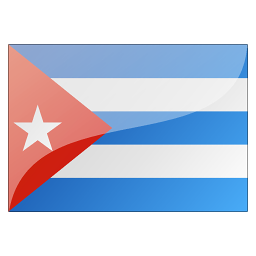



Havana's Old Town – the site where the city first took root in 1519 – is one of the historical highlights of Latin America, an architectural masterpiece where fastidiously preserved squares and grandiose palaces sit alongside a living, breathing urban community still emerging from the economic chaos of the 1990s. The overall result is by turns grand and gritty, inspiring and frustrating, commendable and lamentable. No one should leave Cuba without seeing it.

Few parts of the world get named after yachts, which helps explain why in Granma (christened for the boat that delivered Fidel Castro and his bedraggled revolutionaries ashore to kick-start a guerrilla war in 1956) Cuba's viva la Revolución spirit burns most fiercely. This is the land where José Martí died and where Granma native Carlos Manuel de Céspedes freed his slaves and formally declared Cuban independence for the first time in 1868.

Trinidad is one of a kind, a perfectly preserved Spanish colonial settlement where the clocks stopped in 1850 and – apart from a zombie invasion of tourists – have yet to restart. Huge sugar fortunes amassed in the nearby Valle de los Ingenios during the early 19th century created the illustrious colonial-style mansions bedecked with Italian frescoes, Wedgwood china and French chandeliers.

Lovely Santiago. Far from the capital in Cuba's mountainous 'Oriente' region, this perennial hotbed of rebellion and sedition is Cuba's most 'Caribbean' enclave. The difference is invigorating and sometimes overwhelming. Cultural influences here have often come from the east, imported via Haiti, Jamaica, Barbados and Africa. There's a raucous West Indian–style carnival and a cache of folklórico dance groups that owe as much to French-Haitian culture as they do to Spanish.

Tobacco is still king on Cuba's western fingertip, a rolling canvas of rust-red oxen-furrowed fields, thatched tobacco-drying houses and sombrero-clad guajiros (country folk).

Cuba's third-largest city is easily the suavest and most sophisticated after Havana. The arts shine bright here and it's also the bastion of the Catholic Church on the island. Well known for going their own way in times of crisis, its resilient citizens are called agramontinos by other Cubans, after local First War of Independence hero Ignacio Agramonte, coauthor of the Guáimaro constitution and courageous leader of Cuba's finest cavalry brigade.

La Victória de Las Tunas (as it's officially known) is a sleepy agricultural town anointed provincial capital. It has long held a sleazy reputation for being the Oriente's capital of sex tourism. But thanks to good private lodgings, welcoming locals and a handy location on Cuba's arterial Carretera Central, handfuls of road-weary travelers drop by and are pleasantly surprised. Missing here are the touts that exasperate tourists in other destinations. It's a window into real provincial life.

Santiago är hetare, flirtigare, mer avspänt och mer afrokaribiskt än resten av Kuba. Här föddes Bacardin, revolutionen och Buena Vista Social Club. Följ med till staden som är backig som San Francisco och ligger närmare Jamaica än Havanna.

Spread out like a fan on three sides of downtown, Havana's little-visited suburban municipalities hide a handful of disparate sights that can make interesting half-day and day trips from the city center. Santiago de las Vegas and Santa María del Rosario are former rural settlements that have been incorporated into the larger metropolis without losing their soporific airs; San Francisco de Paula trades off its association with famous former resident, Ernest Hemingway; Arroyo Naranjo encircles the city's largest green space, Parque Lenin, and hosts Havana's expansive botanical gardens.

Elegant and old, this relatively hush city spells oasis to the traveler weary of confrontation. Predating both Havana and Santiago, it has been cast for time immemorial as the city that kick-started Cuban independence. Yet self-important it isn't. The ciudad de los coches (city of horsecarts) is an easygoing, slow-paced, trapped-in-time place, where you're more likely to be quoted literature than sold trinkets. Cuba's balmiest provincial capital, it resounds to the clip-clop of hooves; nearly half the population use horses for daily travel.